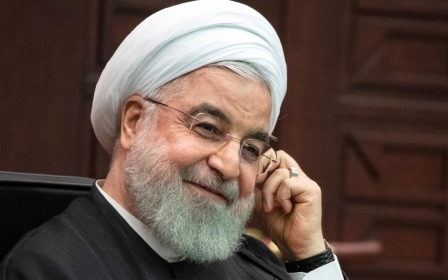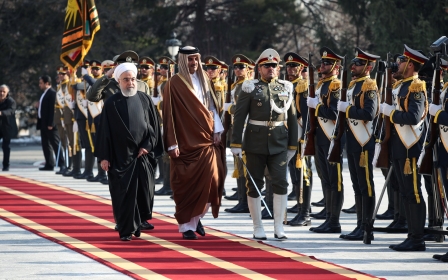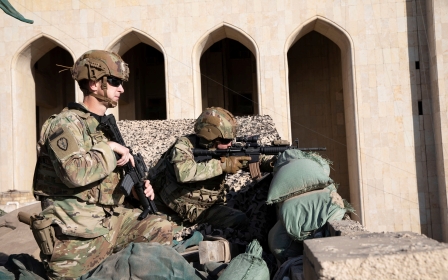Saudi Arabia pays $500m to host US troops in kingdom

Saudi Arabia paid the United States $500m last month to cover part of the cost of US troops stationed in the kingdom, a US official said, as bilateral talks over defence expenses continue.
Commander Rebecca Rebarich, a Pentagon spokeswoman, told Middle East Eye that the payment was "the first contribution" in a burden-sharing partnership between the US and Saudi Arabia to support regional security.
"In response to elevated threats in the Middle East over the past eight months, the Department of Defense has deployed US military forces to the region to enhance US defences and augment Saudi air and missile defence of critical military and civilian infrastructure," Rebarich said on Friday.
"The Saudi government has agreed to help underwrite the cost of these activities and has made the first contribution," she said.
US President Donald Trump said in an interview with Fox News last week that Saudi Arabia had "already deposited $1 billion in the bank".
Saudi payments to the US to offset military costs are not new. During the six-month Gulf War of the 90s, Saudi Arabia, Kuwait and other Gulf states paid the United States $36bn.
The US also charged the kingdom $331m for the cost of aerial refuelling operations that the US military provided to Saudi warplanes carrying out air strikes in Yemen.
Only part of that payment has been collected, but the US, at Riyadh's request, stopped providing aerial refuelling to Saudi jets operating in Yemen in November 2018.
"Consistent with the president’s guidance to increase partner burden-sharing, the Department of Defense has engaged Saudi Arabia on sharing the cost of these deployments, which support regional security and dissuade hostility and aggression," Rebarich said.
It is not yet clear how much Saudi Arabia will be expected to pay for the US's increased presence in the region, as tensions between Washington and Tehran leave the Gulf in a precarious situation.
Bilateral talks to determine that amount are ongoing, Rebarich said, adding that the aim is to formalise a mechanism that will determine the scope of future payments to cover some of the costs of US troop build-up.
"Discussions are ongoing to formalise a mechanism for future contributions that offset the cost of these deployments," Rebarich said.
"Future contributions will not lead to the deployment of additional US forces nor drive DoD to take on new missions or responsibilities," Rebarich said, using an acronym for the Department of Defense.
Regional tensions
Tensions in the Gulf have steadily increased since the US pulled out of a multilateral nuclear deal with Iran in May 2018.
Thousands of additional US troops and weapons have been sent to Saudi Arabia in recent months, as Pentagon officials point to what they say is an increased threat from Iran.
Attacks on Saudi Arabia's Abqaiq and the Khurais oil plants in September caused a spike in oil prices and disrupted more than 5 percent of global oil supply. The US, along with European countries and Saudi Arabia, blamed Iran for the attacks, but Tehran denied any involvement.
After the attacks, the US sent about 3,000 additional troops to Saudi Arabia, including fighter squadrons, an air expeditionary wing and air defense personnel.
It also sent two more Patriot missile defense battalions, which cost around $1bn each, a Terminal High-Altitude Air Defense (THAAD) system and advanced American radar systems.
The animosity has only increased since the US killed Qassem Soleimani, Iran's top general and one of the country's most powerful figures.
Following the assassination, Washington sent another 3,000 soldiers to different locations in the Middle East as a precaution amid rising threats to American forces in the region.
Several days after Soleimani's death, Iran launched more than a dozen missiles at two Iraqi military bases housing US troops. No casualties were reported in the reprisals.
The exchange brought the two countries to the brink of war, but they have so far declined to escalate further.
Saudi Arabia is the biggest global buyer of US weapons, with its total military spending far surpassing the amount spent by any other country in the region.
Middle East Eye propose une couverture et une analyse indépendantes et incomparables du Moyen-Orient, de l’Afrique du Nord et d’autres régions du monde. Pour en savoir plus sur la reprise de ce contenu et les frais qui s’appliquent, veuillez remplir ce formulaire [en anglais]. Pour en savoir plus sur MEE, cliquez ici [en anglais].





